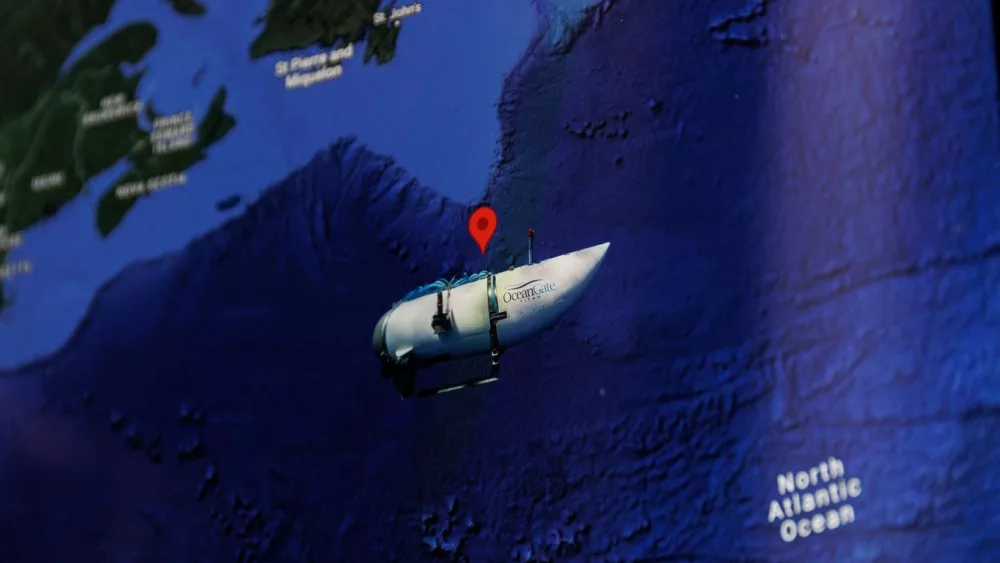The estate of a Titanic researcher who was among the five people killed when the Titan submersible imploded while on a deep-dive voyage to the site of the famous shipwreck last year, has filed a wrongful death lawsuit against OceanGate -the operator of the tourist submersible that catastrophically failed.
The family of French explorer Paul-Henri Nargeolet filed a $50 million wrongful death lawsuit on Tuesday in King County, Washington against OceanGate, saying that the crew experienced “terror and mental anguish” before the disaster and accusing the sub’s operator of gross negligence. Nargeolet was one of five people who died when the Titan submersible imploded during a voyage to the famed Titanic wreck site in the North Atlantic in June 2023. There were no survivors aboard the experimental submersible owned by OceanGate, who had sold seats on the vessel for $250,000 each, billing the trip as a chance to “become one of the few to see the Titanic with your own eyes.”
OceanGate CEO and cofounder Stockton Rush was operating the Titan when it imploded; in addition to Rush and Nargeolet, the implosion killed British adventurer Hamish Harding and two members of a prominent Pakistani family, Shahzada Dawood and his son Suleman Dawood. OceanGate, based in Washington state, has since suspended operations. In the wake of the incident, industry experts were said to have raised serious safety concerns about the project years earlier, even warning in 2018 that OceanGate’s experimental approach to the design of the Titan could lead to potentially “catastrophic” outcomes.
According to the lawsuit, Nargeolet — known as “Mr. Titanic” — participated in 37 dives to the Titanic site, the most of any diver in the world. He was regarded as one of the world’s most knowledgeable people about the famous wreck. Attorneys for his estate said in an emailed statement that the “doomed submersible” had a “troubled history,” and that OceanGate failed to disclose key facts about the vessel and its durability.
According to the lawsuit, the Titan “dropped weights” about 90 minutes into its dive, indicating the team had aborted or attempted to abort the dive: “while the exact cause of failure may never be determined, experts agree that the Titan’s crew would have realized exactly what was happening. Common sense dictates that the crew were well aware they were going to die, before dying …The crew may well have heard the carbon fiber’s crackling noise grow more intense as the weight of the water pressed on Titan’s hull. The crew lost communications and perhaps power as well. By experts’ reckoning, they would have continued to descend, in full knowledge of the vessel’s irreversible failures, experiencing terror and mental anguish prior to the Titan ultimately imploding.”
The lawsuit also alleges that OceanGate failed to disclose the Titan’s flaws and purposely concealed its shortcomings to Nargeolet, even though he had been designated a member of the vessel’s crew by the company. Nargeolet would not have participated in the voyage if he had been aware of the Titan’s issues, the suit claims.
Tony Buzbee, one of the attorneys for the family of Nargeolet, said in a statement: “The lawsuit alleges serious issues with the Titan submersible. I think it is telling that even though the University of Washington and Boeing had key roles in the design of previous but similar versions of the Titan, both have recently disclaimed any involvement at all in the submersible model that imploded.”
A spokesperson for OceanGate declined to comment on the lawsuit, however court papers state that the defendants must respond to the complaint in the coming weeks. After the sub’s implosion, the U.S. Coast Guard quickly convened a high-level investigation, which is ongoing. A key public hearing that is part of the investigation is scheduled to take place in September.
Editorial credit: Rokas Tenys / Shutterstock.com





